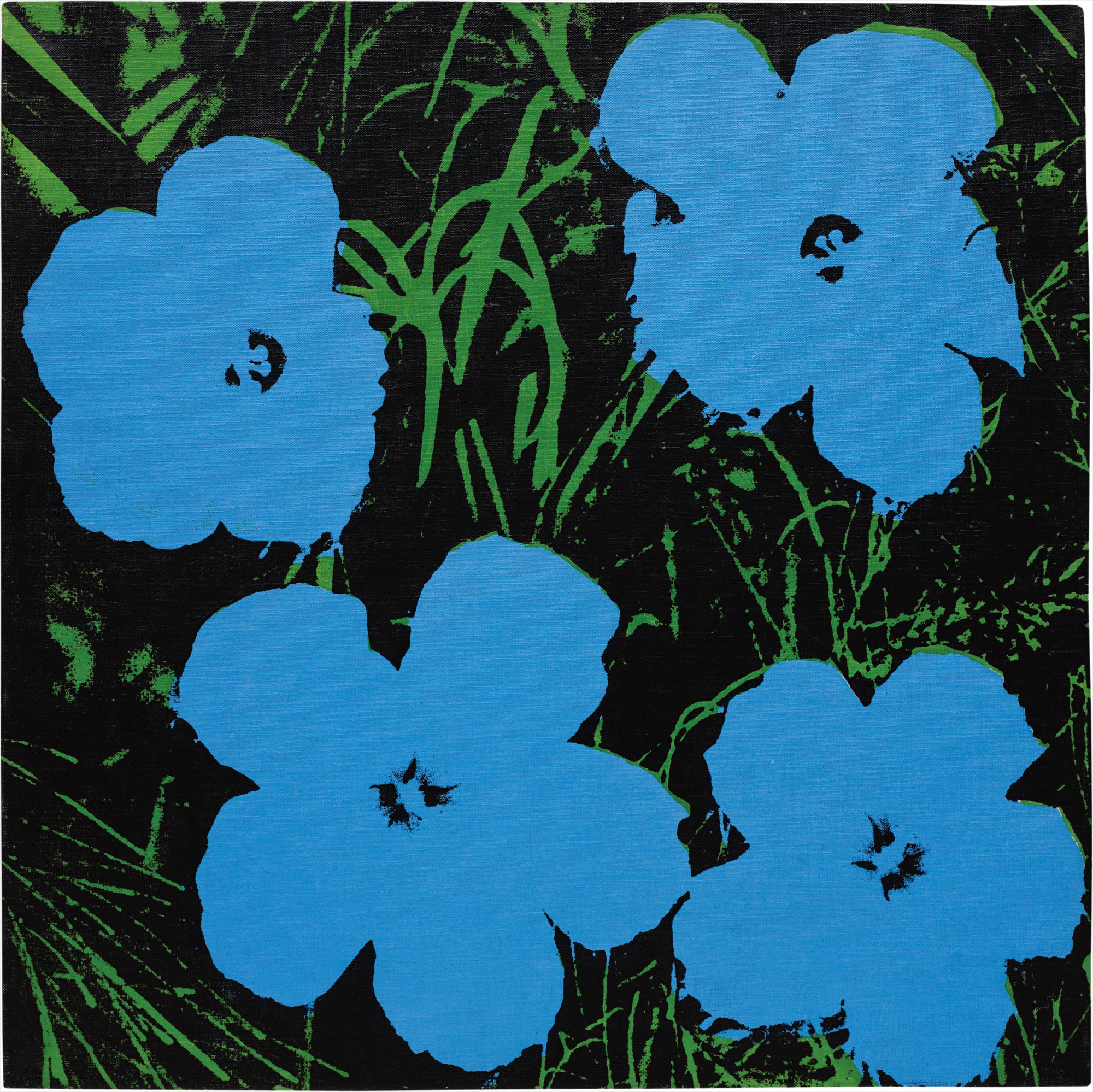

17Ο
Andy Warhol
Flowers
Full-Cataloguing
ANDY WARHOL, 1964
Emerging alongside some of his most famous works, Andy Warhol’s Flower series began in the summer of 1964, coinciding with his departure from the Stable Gallery and his pending inclusion into the pantheon that was the Leo Castelli Gallery. Although between galleries for several months, the artist’s production during the summer season leading to some of this most electrifying work. By September, Warhol had produced his 40 inch Marilyn paintings in shot red, orange, blues and turquoise as well as his elegant series of Jackie paintings. At the same time, the artist had begun to prepare for his inaugural show at Castelli with a fresh body of work, turning away from Death and Disaster and towards a series of Flower paintings that have since become an essential motif within his artistic repertoire. Certainly, Warhol’s Death and Disaster series proved to be a catalyst in the creation of the present lot, evoking a sense of rejuvenation and rebirth in his practice.
The present lot Flowers, 1964, was exhibited amongst the first collection of this series at Castelli in November through December. Installed on a floating wall panel at the front of the gallery, Warhol adorned the entire wall with his 24 inch Flower paintings, each frame evenly spaced, culminating into a mural- a veritable field of flowers in the
gallery. Deviating from the modular quality of his Jackie paintings, the Flowers were created in varying sizes, including 22 inch, 14 inch, the eight and the five inch paintings, of which the 22 inch series was commissioned by Ethel and Robert Scull. The remaining sizes were executed for Warhol’s second exhibition that was to be held at Sonnabend in Paris in 1965. Engaging with the motif in a spectral range of color including fluorescent paints manufactured by the Day-Glo color corporation. The 24 inch paintings were amongst the most numerous in Warhol’s production, eight-one in total are noted in the catalogue raisonné.
Continuing his exploration of appropriation and mechanical reproduction, Warhol adopted the motif of the flower from a photo by Patricia Caulfeld that he had come across
in a magazine article. The idea however, to use the image for an entire body of work, had originally been suggested by Henry Geldzahler, then curator of the Metropolitan
Museum in New York, who encouraged Warhol to distance himself from his Death and Disaster series and opt for the flower image that had been featured in the Modern
Photography magazine. Turning to the flower for inspiration for this monumental and seminal body of work, a symbol of nature that for as long as painters have applied
pigment to canvas, or artisans have perfected their craft, the flower – in all its symbolism, fragility, and mysterious allure has lent itself throughout art history as the perfect subject.
Cropping and shaping the Flower paintings allowed for the perfect square shape, in all sizes. These works become signature early Pop art icons, while simultaneously
embodying a series of work that had become Warhol’s first major commercial success. It is therefore to be expected that Warhol would have borrowed a subject matter of
perfection to become the motif of his new body of work – a body of work that in its pureness and ‘flower power’ radiance has proven to be one of Warhol’s most successful
and recognized series that perhaps underlines Warhol’s objectives as an artist and art icon: “Business art is the step that comes after Art. I started as a commercial artist, and I want to finish as a business artist.” (Andy Warhol)
Andy Warhol
American | B. 1928 D. 1987Andy Warhol was the leading exponent of the Pop Art movement in the U.S. in the 1960s. Following an early career as a commercial illustrator, Warhol achieved fame with his revolutionary series of silkscreened prints and paintings of familiar objects, such as Campbell's soup tins, and celebrities, such as Marilyn Monroe. Obsessed with popular culture, celebrity and advertising, Warhol created his slick, seemingly mass-produced images of everyday subject matter from his famed Factory studio in New York City. His use of mechanical methods of reproduction, notably the commercial technique of silk screening, wholly revolutionized art-making.
Working as an artist, but also director and producer, Warhol produced a number of avant-garde films in addition to managing the experimental rock band The Velvet Underground and founding Interview magazine. A central figure in the New York art scene until his untimely death in 1987, Warhol was notably also a mentor to such artists as Keith Haring and Jean-Michel Basquiat.